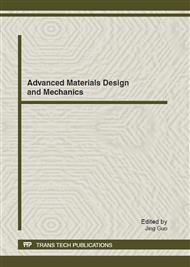p.546
p.552
p.556
p.560
p.564
p.568
p.572
p.576
p.585
A Design Technique for a Magnetic Bearing-Rotor in a Turbo Blower Considering Critical Speeds
Abstract:
This paper introduces a rotor design technique for a turbo blower supported by magnetic bearings that considers the critical speeds of the rotor. An important factor for rotor critical speeds is the stiffness of its bearings. The magnetic bearing acts as a negative spring, called the position stiffness prior to operation, and rotor systems are initially unstable until the stiffness (current stiffness) and damping in the active control rotating system are determined using closed loop control forces. This paper describes a finite element model for the rotor, derives the stiffness equations for the magnetic bearing, and defines the total magnetic bearing stiffness including the position stiffness and current stiffness. Finally, the magnetic bearing stiffness that avoids the rotor critical speeds is chosen.
Info:
Periodical:
Pages:
564-567
Citation:
Online since:
September 2012
Authors:
Price:
Сopyright:
© 2012 Trans Tech Publications Ltd. All Rights Reserved
Share:
Citation:


